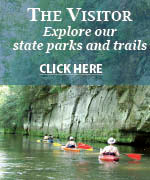By JACKIE MENN | Grecian Odyssey traveler
History that most people only read about in textbooks came alive for the Brookwood students who recently traveled to Greece as part of Education First’s Grecian Odyssey experience.
This nine-day excursion between the Aegean and Ionian Seas was for many students their first time traveling outside the borders of the United States. In addition to seeing the history of AncientGreece firsthand, travel abroad opened the eyes of students to cultural diversity in a world that is becoming more global. For many, it built confidence, introduced them to new friends, and created opportunities for language immersion.
After a flight over the Atlantic from Chicago and a brief layover in Frankfort, Germany, the Brookwood group jumped aboard an airliner bound for Athens. More than 24 hours after leaving the security of their homes, students got their first glimpse of the beautiful Aegean Sea. A coach bus ride through Athens and then along the coast brought them to their first ruin on Cape Sounion. The Temple of Poseidon was perched high on a peak surrounded by the sea. A breathtaking view from all directions was punctuated by a Greek sunset.
Tour director Michael reminded the group to enjoy every step of the journeyand to become travelers, not just tourists. He encouraged the group to take detours off the beaten path and to take in the sights, smells, and sounds of a different land and its people.
Michael escorted us on a walking tour of Athens: city of 5 million people. A highlight of the tour was a stop at the Acropolis to see the Parthenon and Mars Hill, followed by the wonders seen in the Acropolis Museum. A stop at the old Olympic (Panathenaic) Stadium was also on the tour docket. Dinner of authentic Greek cuisine including gyros and Greek yoghurt and honey, served in a restaurant beneath a lighted Parthenon, made the first full day in Athens complete.
Our first taste of Greek music, complete with guitar-like bouzouki and traditional dancers, was experienced on board a cruise ship that took us to the islands of Hydra, Poros, and Aegina. As is typical of Greek architecture, quaint island towns were built into and up the hillsides. At a stop in the countryside of Aegina, pistachio nuts which were locally grown were available straight from the farm.
All along the journey, local tour guides explained how archeologists uncovered temples to pagan gods, most of them built thousands of years B.C. (Before Christ). Many of the ancient structures were damaged and buried over the years by earthquakes. The Lion Gate in Mycenae, part of the ruins thought to be from the oldest Greek civilization, awaited the group after leaving Athens. Looking across the valley from the ruins, the profile of Agamemnon, which mimicked the gold mask found in the ruins, could be seen against the blue Mycenaean sky. A short trip down from the acropolis took us to the beehive shaped tomb of Agamemnon. Also known as the Treasury of Atreus, it is the largest of the tombs in Mycenae, constructed around 1250 B.C.
A true mystery, the theater of Epidaurus, held visitors in awe and wonder at its amazing acoustics. The theater held almost 15,000 people in its day who, even if seated in the most distant seats, could have heard a pin dropped in the center of the stage without the use of any artificial means. This brilliant technology, which has yet to be fully understood, dates back to 566 B.C., when the theater was constructed.
To observe the day Greeks gained their independence from the Ottoman Empire on March 25, 1821, stores, banks, and ruins were closed for the holiday. As a result, the tour schedule changed a bit, which allowed us to visit the seaside village of Nafplio. Vendors lined the main street in true flea market fashion for the festivities. Charming shops invited travelers in to buy items crafted by artisans. The intrigue of Palamidi Castle, a fortress which overlooked the city, beckoned more than a few to climb the 999 stairs to the top! Desserts like baklava, galaktoboureko (custard in filo), loukoumades (Greek honey donuts), and frozen Greek yoghurt could be found all over but tasted especially sweet and delicious when eaten outdoors at a seaside café accompanied by a cup of coffee Americano or frappe.
The next stop on the itinerary was Olympia: site of the original Olympic Games held to honor the pagan god Zeus. The original Olympics were as much a religious festival as an athletic event. The stadium field was available to those in the group who wanted to run in the footsteps of the ancient Olympians and some took advantage of the opportunity to sprint the 200 meters on the stadium track. Like many museums on the tour, statues and artifacts were on display in the Archaeological Museum of Olympia, however, tour director Michael strongly suggested while visiting this museum we see the statue of Hermes holding the child Dionysus because of its amazing change in facial expression when viewed from different angles.
Olympia is also home to the Archimedes Museum, where the group experienced the ingenuity of the man thought to be the greatest mathematician and scientist of antiquity. Students worked at figuring out the Stomachion or Archimedes Box, which is the oldest mathematical puzzle, dating back almost 2,300 years. The museum had on display 24 replicas of Archimedes inventions, including the Archimedean screw.
Greek pottery was in abundance, so it was logical that while traveling in Greece one would learn the art of pottery making. An excursion to a pottery shop gave group members the opportunity to mold a piece of pottery from clay. The finished product resembled an ancient Greek pottery doll.
Agriculture was a large part of the scenery through the countryside of Greece. Oranges and lemons hung from trees, ready for picking. Olive and almond trees by the acre and rows of greenhouses lined the highways in rural areas. Greece is one of the world’s leading producers of olive oil and raisins. A stop in olive country provided the opportunity to sample many flavors of olive oil, olives, honey, and spices and even send some back home.
Traveling north from Olympia, we made our way across the Rio-Antirrio (Charilaos Trikoupis) Bridge, one of the world’s longest multi-span cable-stayed bridges, which crosses the Bay of Corinth. In view of the bridge, a bakery stop afforded the chance to enjoy sweet Greek treats once again. On a road which ascended for many miles, we made our way to Delphi, belly button of the ancient world as the mythological tales will tell. Again we were treated to breathtaking views of the valleys below us. The ruins at Delphi are famous for the Sanctuary of Apollo and the ancient Oracle of Delphi which provided cryptic predictions and guidance to those who sought advice from the 8th century B.C.
As we made our way back toward Athens for our last night in Greece, we made a special out- of-the-way stop at a Greek Orthodox mountaintop monastery to see the exquisite mosaic art murals and Byzantine architecture. The Greek evening that then awaited the group back in Athens combined a several course meal of Greek cuisine, music, and participatory Greek dancing with natives in traditional costume.
Brookwood’s European excursions have been taking place every other year for decades and are currently being coordinated by Harvey Menn, who teaches Technology Education at Brookwood. Menn works with Education First (EF) Tours, which makes all arrangements at the destination. This year, 13 Brookwood students and 19 adults experienced the wonders of the ancient world in Greece.


